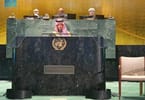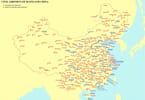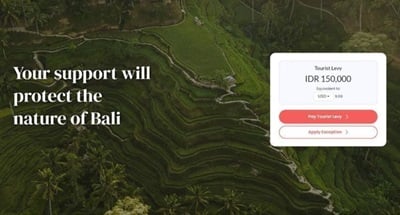Ce ne arată așa-zisul miracol al vaccinurilor
New vaccines usually take about 10 to 15 years to make. So, the development of multiple high-quality COVID-19 vaccines in less than a year is unprecedented.
And it’s easy to see why that might seem like a miracle. But in fact, the COVID-19 vaccines are the result of decades of careful investment, policies, and partnerships that established the infrastructure, talent, and enabling ecosystem needed to deploy them so quickly.
We have scientists around the world to thank for their years of foundational research. One researcher, Hungary’s Dr. Katalin Karikó, dedicated her career to studying messenger RNA, also known as mRNA. For years, her unorthodox ideas failed to gain broad support and funding, and many dismissed the idea that mRNA could be used to make vaccines and therapeutics. But Dr. Karikó persevered. Her story is emblematic of the many scientists whose discoveries—often years in the making—have made it possible for two highly effective mRNA vaccines to be developed in less than one year.
It’s a gift that will keep on giving: There are already mRNA vaccine candidates in the development pipeline that could finally tackle some of the world’s deadliest diseases, from malaria to cancer.
Of course, mRNA vaccines aren’t the only R&D success story to come out of this approach.
Promisiunea pe termen lung a secvențierii genomice
By now, the whole world is keenly aware that SARS-CoV-2, the virus that causes COVID-19, has mutated into increasingly infectious and deadly variants, like delta, as it spreads around the world. Thanks to genomic sequencing—identifying the unique genetic makeup of a virus—scientists have been able to identify and track emerging variants.
Historically, the majority of the genomic sequencing in the world has taken place in the United States and Europe. Countries without sequencing technology would send viral samples to labs in places like New York and London for genetic analysis—and they’d only get results months later.
But for the past four years, organizations have been investing in building a genomic surveillance network in Africa, so countries on the continent could sequence viruses like Ebola and yellow fever. The Africa CDC established the Africa Pathogen Genomics Initiative, and when the pandemic hit, the nascent network turned its attention to SARS-CoV-2. The only reason the world knew that the more infectious and deadly beta variant had emerged in South Africa was because the country had invested heavily in R&D—in this case, pairing genomic sequencing capabilities with clinical trials and immunology studies. South Africa’s own Dr. Penny Moore was one of the first scientists to discover that a coronavirus variant identified in South Africa could circumvent the immune system.
With this information, public health officials around the world could plan accordingly. And South Africa, which has also invested deeply in infrastructure to rapidly and effectively conduct clinical trials, could quickly adjust its vaccine trials. They began working to determine whether COVID-19 vaccines provided sufficient protection against the new variant that would soon spread everywhere.
Este insuficient ca țările bogate să fie singurele cu echipamente și resurse pentru a secvenționa virușii.
It seems obvious that in a globalized world, where people and goods move constantly across borders, it’s insufficient for rich countries to be the only ones with the equipment and resources to sequence viruses. But it took a pandemic to reinforce how important it is to support the ability of low- and middle-income countries to collect and analyze their own data—because it benefits everyone.
And what’s particularly exciting about Africa’s genomic sequencing network is that the technology works for any pathogen: If the continent is able to keep building the network, it will soon be doing its own disease tracking for long-standing viruses like flu, measles, and polio.
Scientific innovation, even at a record-breaking pace, isn’t enough on its own. The COVID-19 vaccines are an amazing feat of R&D, but they are most effective when everyone has access to them. The inequities of the past year remind us that this is far easier said than done.
It’s up to people—from the halls of power to grassroots organizations and neighborhood groups—to step up to fill the gaps. And this year, it was these dynamic human interventions, when met with previous investments in systems, in communities, and in people, that allowed the world to avoid some of those initial, worst-case predictions.
Investiție în sisteme
As we write this, more than 80% of all COVID-19 vaccines have been administered in high- and upper-middle-income countries. Some have secured two to three times the number of doses needed to cover their populations, in case boosters are needed for increasingly infectious variants. Meanwhile, less than 1% of doses have been administered in low-income countries. These inequities are a profound moral outrage—and raise the very real risk that high-income countries and communities will begin to treat COVID-19 as another epidemic of poverty: Not our problem.ShareCaliforniaTotal VaccinesAdministered:42MPopulation:39.5MThe population of the entire continent of Africais more than 30 times that of the state ofCalifornia. But through the first half of 2021,they’d each administered roughly the samenumber of vaccines.AfricaTotal VaccinesAdministered:48MPopulation:1.3B
The infrastructure needed to quickly manufacture an additional 15 billion vaccine doses cannot be set up overnight, or even in a year. But India provides an example of what happens when that infrastructure is built up over the long term.
India has been investing in its health care manufacturing infrastructure for decades—since the country’s independence. The Indian government helped Pune, a city near Mumbai, become a major global manufacturing hub by investing in R&D capacity and local infrastructure, like electricity, water, and transportation. They worked with the World Health Organization to build a regulatory system for vaccines that upheld the strictest international standards for quality, safety, and efficacy. And they partnered with vaccine manufacturers in Pune and other hubs like Hyderabad and our foundation to develop, produce, and export vaccines that tackle the deadliest childhood illnesses, from meningitis to pneumonia to diarrheal diseases.Of course, simply having manufacturing capacity wasn’t sufficient to negate the crisis of COVID-19 in India—it’s just one piece of the puzzle—but it is a remarkable feat of progress that today more than 60% of all vaccines sold globally are manufactured on the subcontinent.
We’ve also seen that countries that have strong government investment in health infrastructure are far better able to proactively track, and in many cases, contain the spread of COVID-19. Long-term investments in eradicating wild polio in lower-income countries have helped countries like Nigeria and Pakistan build one of the largest operational workforces in modern global health. Investing in polio eradication created infrastructure for outbreak response and vaccine administration—which made a critical difference in disease outbreaks from Ebola to COVID-19.
That’s why long-term investments in health systems are so worthwhile: They are the foundation for emergency disease response. We might not have known which specific pathogen would lead to a once-in-a-generation global pandemic, but the tools to end the pandemic are largely the same as for polio or malaria or other infectious diseases: widespread testing and, when possible, fast and effective treatment and lifesaving immunization.
Investind în comunități
Some of the most effective interventions we’ve been tracking have happened at a hyperlocal level, headed by leaders who have worked long and hard to earn the trust of their communities—something that cannot be built overnight or in the midst of a crisis.
Women’s “self-help groups” are common across India as well as other parts of South and South-East Asia. For years, the Indian government and global partners have been investing in these small collectives of women who pool money and work to improve health, education, and other services in their villages.
When COVID-19 arrived in Bihar, India, home to more than 100 million people, one local self-help group established trust with their neighbors by delivering meals and home-based health care to those who had fallen ill from COVID-19. When vaccines were ready for distribution in their community, these women became a source of information and guidance for those same neighbors who had concerns about vaccine safety. The Bihar government took notice of the work being done at the community level and declared March 8—International Women’s Day—a day to vaccinate women across the state. Nearly 175,000 women took the first dose of the vaccine that week. Building on that success, the government of Bihar is replicating the program, guided by the women of the self-help group.

And in Senegal, community-based outreach has been key to delivering other vaccines, too.
Senegal has been one of the success stories of routine immunization coverage: Before the pandemic, children were immunized against diphtheria, tetanus, and pertussis at similar rates as children in the United States and other high-income countries. But when COVID-19 arrived, fear of infection and misinformation reduced the demand for these vaccines dramatically.
CE ESTE DE LUAT DIN ACEST ARTICOL:
- It seems obvious that in a globalized world, where people and goods move constantly across borders, it's insufficient for rich countries to be the only ones with the equipment and resources to sequence viruses.
- But it took a pandemic to reinforce how important it is to support the ability of low- and middle-income countries to collect and analyze their own data—because it benefits everyone.
- The only reason the world knew that the more infectious and deadly beta variant had emerged in South Africa was because the country had invested heavily in R&D—in this case, pairing genomic sequencing capabilities with clinical trials and immunology studies.





















